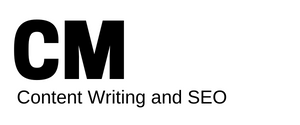To begin with writing content for websites, start with the old cliché: write with your reader in mind.
You probably heard it in grade school, but it’s actually great advice for writing anything that’s going to be read on a screen like blog posts and website copy.
And it’s easy to do.
Just imagine yourself as the reader. How often do you read an article or blog post from start to end? How many times have you seen a huge block of text on a company’s “about us” page, and immediately clicked away?
You’re not alone. The Nielsen Norman Group conducted eye tracking studies for web readers that showed a dominant “F-pattern” that the typical user’s eyes followed on a web page.
Most users don’t read—they scan, so write for your reader, and format for your scanner.
Your writing may be fantastic and useful, but that’s only a small part of an internet marketer’s fight. When writing content for websites, keep in mind that every word has to earn a reader’s continued attention.
Regardless of how you do it, always extract the main points and insert them in plain view.
Your main points are the second most important part of your content, behind the headline. Interesting ideas that stick out from the rest of your text act like secondary headlines, enticing the reader to quit scanning and zero in on your content.
Your first main point should be the promise you make. It should go in your introduction, preferably the first or second sentence.
In this post, I promised an introduction to proper formatting when writing content for websites. The following points in your content should focus on fulfilling that promise.
Extract the main points
and insert them in plain view
But a piece of content is more than just a headline, intro, and a couple main points. You need a readable body too.
That way, if someone’s interested enough in what you have to say to dig into your content, you don’t scare them off.
To keep a clean, readable body, follow these guidelines:
1. Use short sentences. (25 words or less)
2. Use simple words—for example, beautiful not pulchritudinous.
3. Limit paragraph length to 3 to 5 lines.
I like to imitate the journalists at the BBC when giving myself guidelines for paragraph length. Here’s an article about elephants, so you can see what I’m talking about.
They’ll sometimes go beyond 5 lines, but only when the text is broken into a narrower column.
The last part of your content should ask the reader to do something. In marketing lingo, it’s called a call-to-action. This can be an offer for another helpful blog post, an invitation to subscribe, or a product offering. Keep it relevant.
Ask the reader to act.
For example, you just read an intro on writing content for websites.
My guess is that I’ve piqued your interest, but now you need more detailed info on how to write your headlines, intros, and main points.
Let’s start with which words professional blog content writers avoid in great headline!
Key Takeaways
• Write for the reader, format for the scanner.
• Put your main points in plain view.
• Keep a clean, readable body.
• Ask for action.

